Groves Natcheva Architects transforms an awkward London plot into a modern home
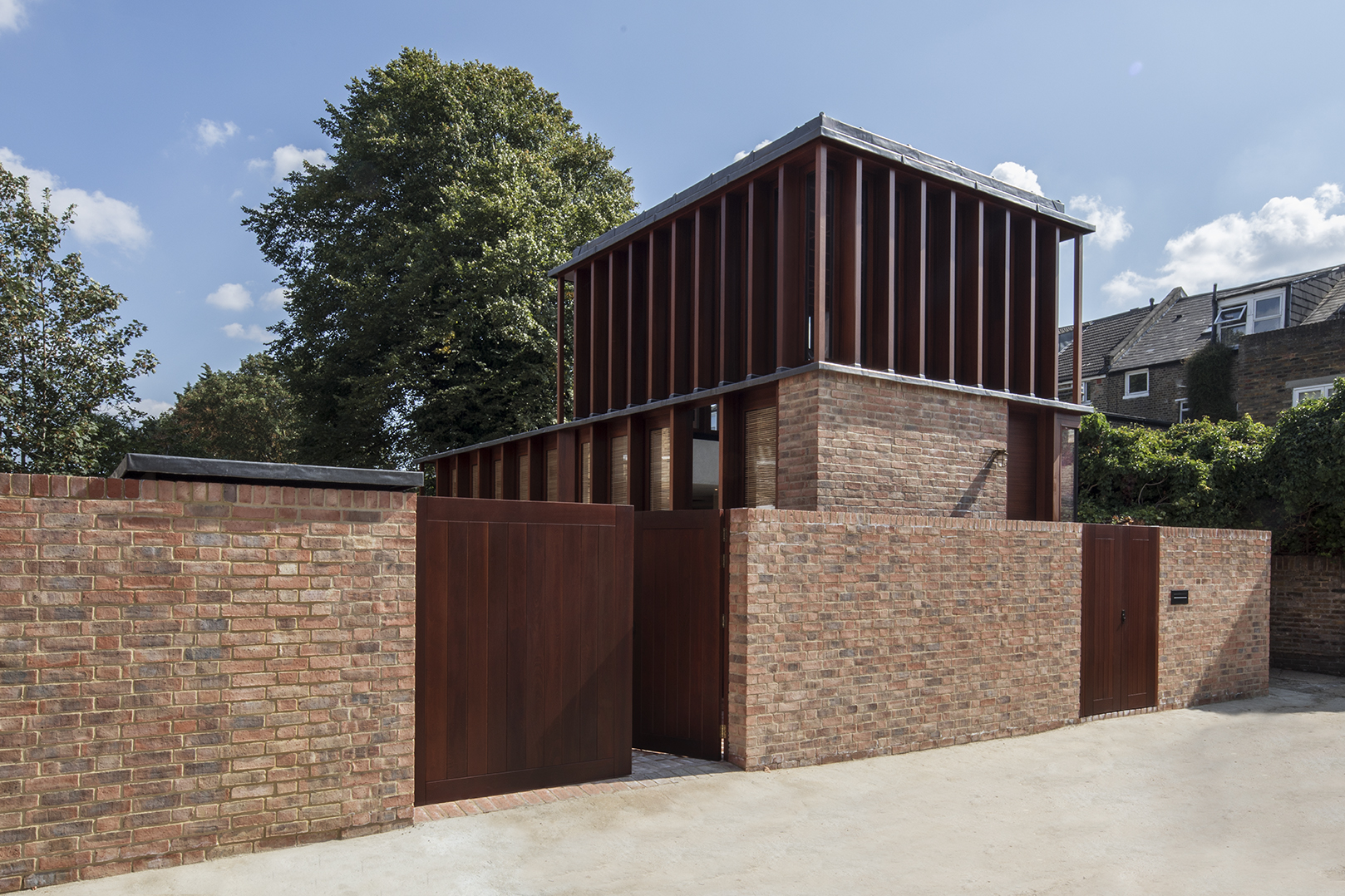
Having a keen eye for spotting opportunities is an essential part of being an architect; especially in a dense and pricey metropolis such as London. Adriana Natcheva and Murray Groves have been practising in the British capital for years, and have proven to be canny operators, finding innovative solutions to challenging situations, especially when housing is concerned.
Their Zog House, designed in 2004 for developer Solidspace, was such an example, built in an awkward North London plot and completed to wide acclaim. Now, more than ten years on, their ongoing ingenuity keeps paying off, with a private client approaching them a few years back for a similar site in the same neighbourhood.
The spot was an urban ‘no-man’s land' sitting between two rear gardens. It had the benefit of street frontage but its close proximity to other buildings and neighbours' windows and rights of light made this site a particularly challenging commission. However, Groves Natcheva Architects jumped at the opportunity to tackle the design and created a contemporary courtyard house, which not only fits perfectly the surroundings, responding to the context's very particular needs, but also goes beyond pure functionality, looking every part the modern home its owner desired.
The client wanted a house to rent or sell, so designing without a specific owner in mind presented an added twist – which the architects saw as an opportunity. ‘[Designing without a specific resident in mind] you can speak to the plausibly universal, to shared elements that lie beyond individual tastes and variations, taking care not to become too abstract', explain Groves and Natcheva. ‘You can also formulate design in a way that makes it adaptive, where the eventual resident's character can reshape it post hoc. And sometimes you can find elements whose force you can be confident will not be resisted.'
The architects excavated one level down, where they situated the house's bedrooms, bathrooms and a study. Two generous courtyards, cut out at the side and rear of the site go far beyond just providing light to the lower floor; their carefuly designed proportions and planting make them feel natural and provide much needed, real and usable outdoor space. Additional al fresco areas include a terrace on the ground level, which can be accessed by a set of elegant, wooden garage doors.
Upon stepping through the main entrance, visitors encounter the design's true pièce de résistance; the open-plan and brightly lit ground floor living spaces. Unable to add windows on street level due to planning requirements, the architects cleverly created large strips of glazing high up towards the roof, crafting a sequence of warm timber frames and windows that bathe the interior with natural light.
A sitting area is planned at the front of the house, with the kitchen placed towards the back. Partly spanning a double height, the space has an almost cathedral-like quality, which is accentuated by the project's material selection of tactile bricks, concrete and wood. Bespoke details throughout, such as feature lighting and sculptural balustrades, further enhance the high design quality of this thoroughly modern home.
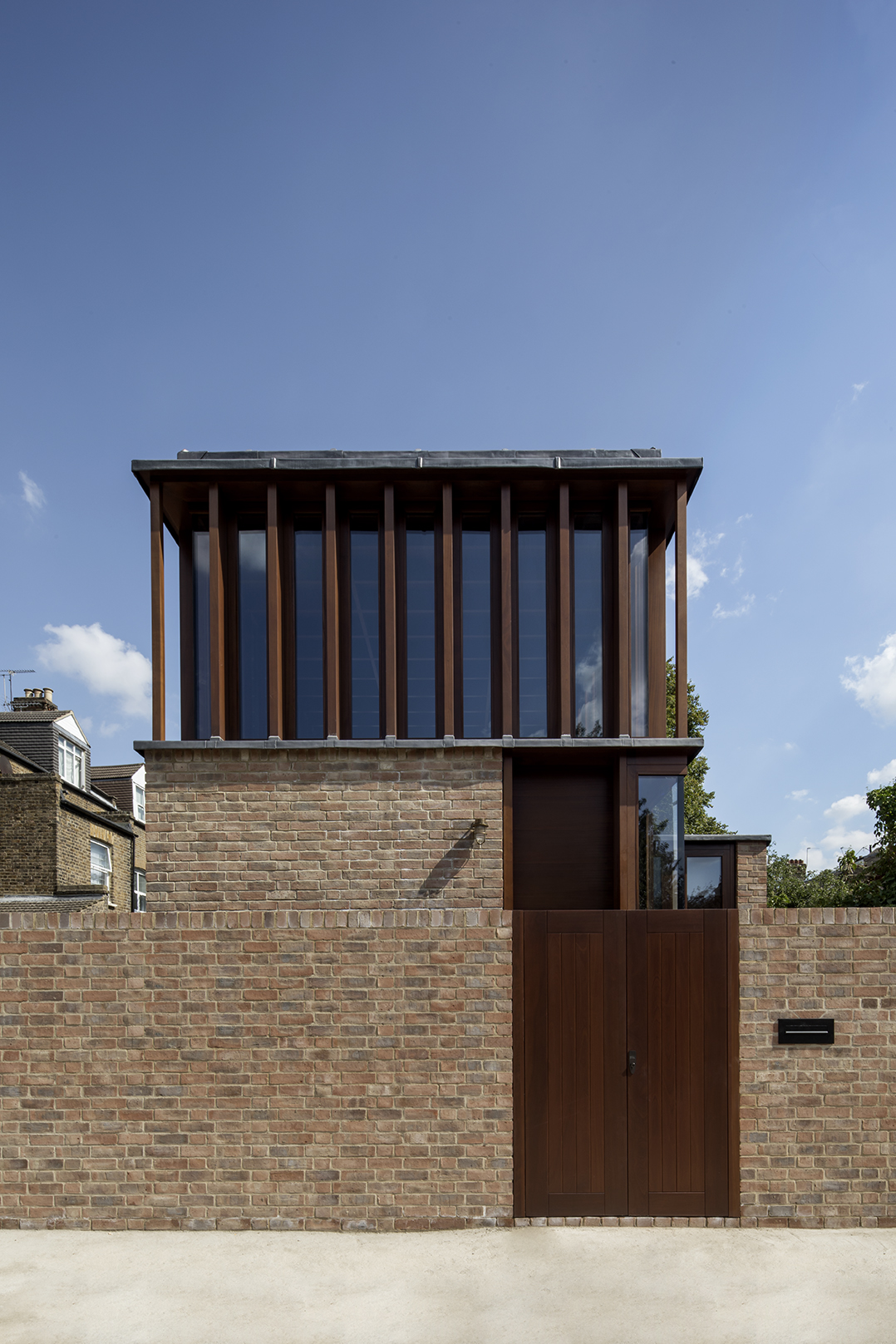
The house was built within an urban ’no-man’s-land’, the space between two rear gardens.
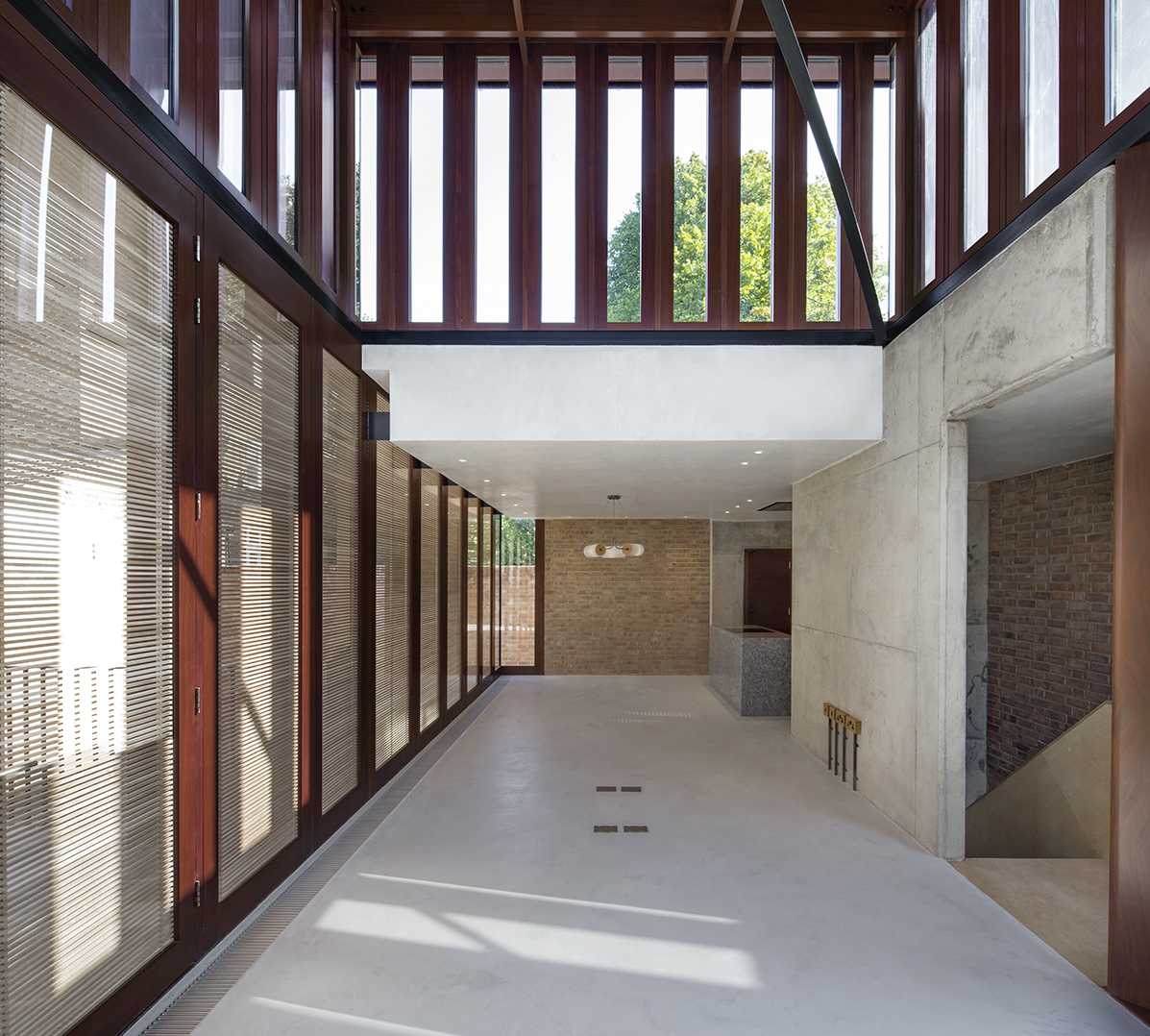
The architects crafted the house out of brick and wood, focusing on its relationship with the outdoors and natural light.
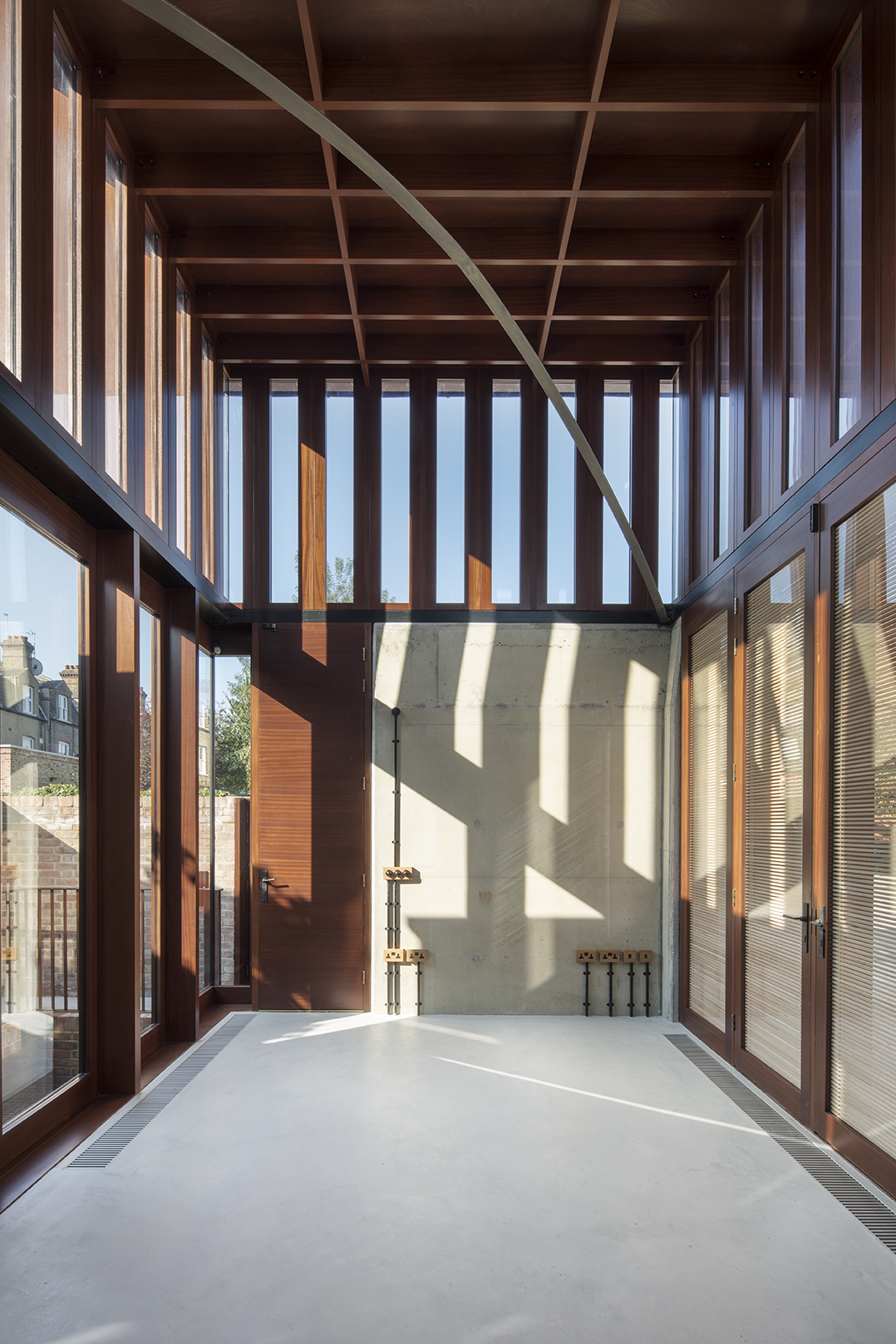
The front facing living spaces are bathed in sunlight through large strips of glazing.
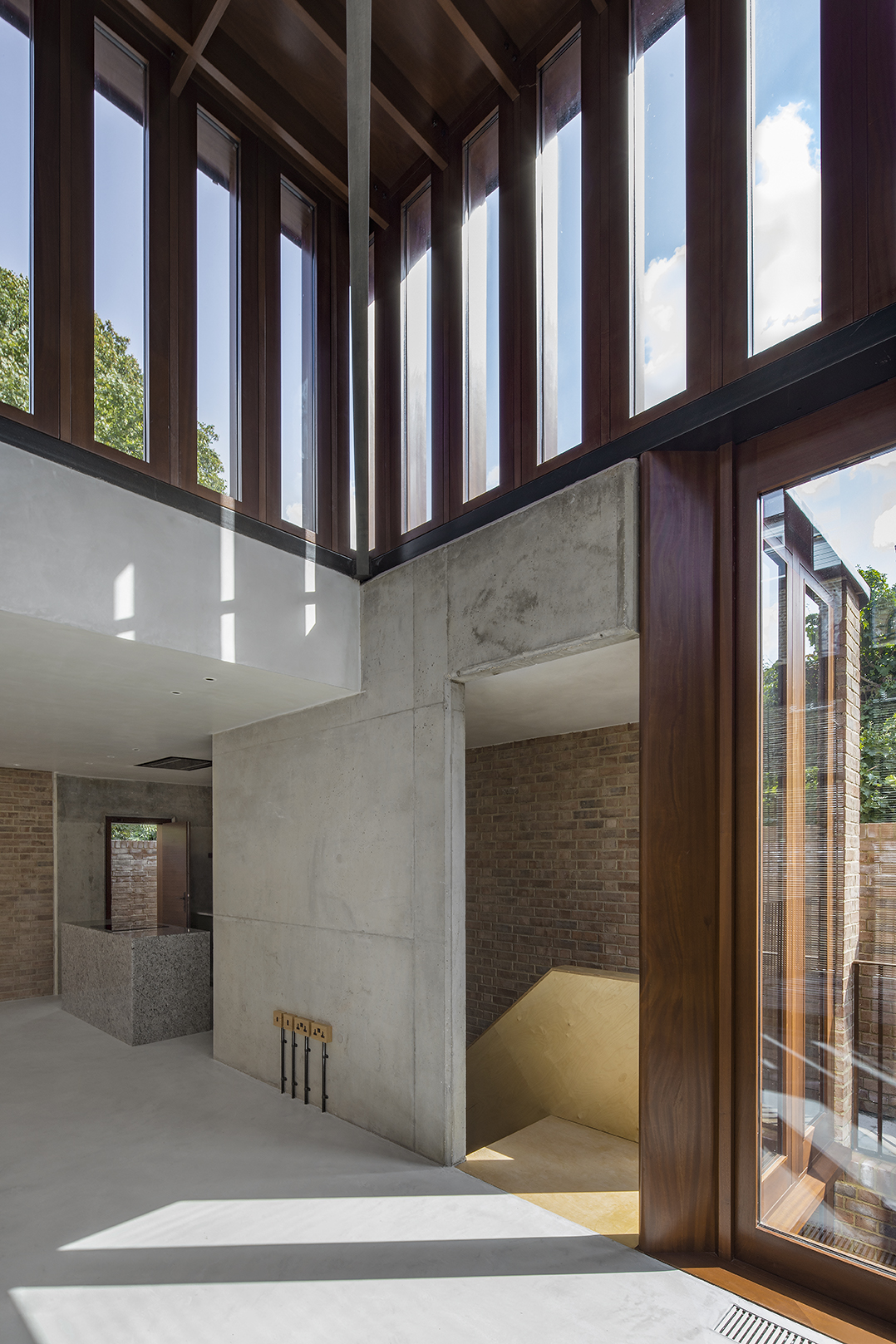
The kitchen is located towards the rear of the plot.
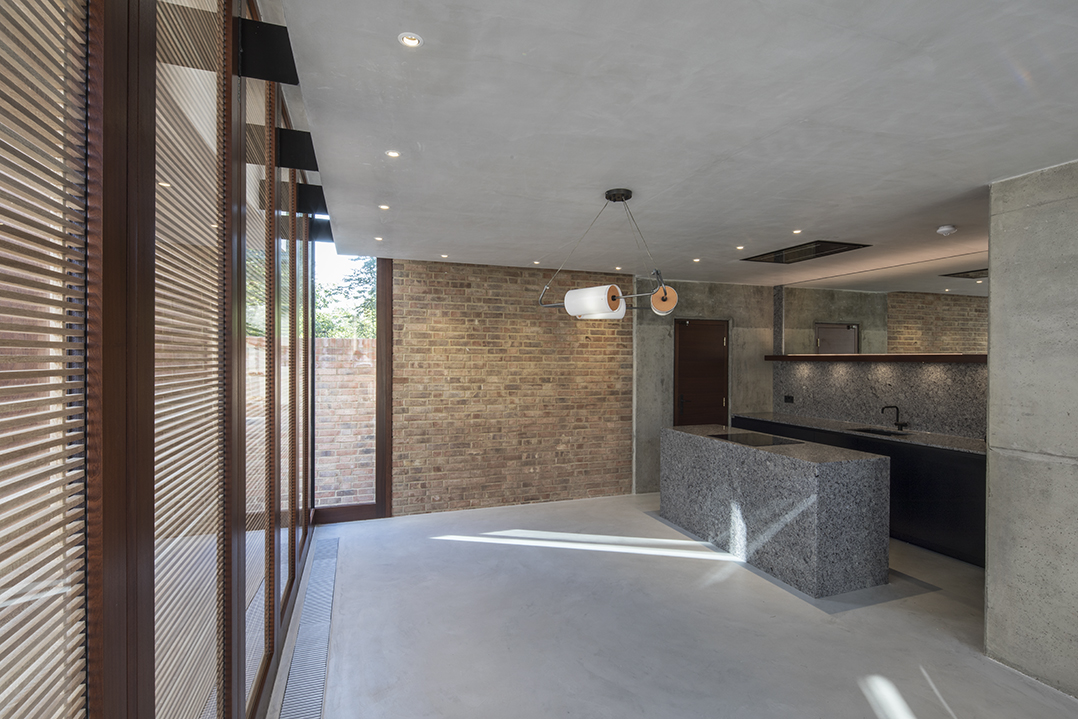
Kitchen and dinning areas look out towards the house’s generous courtyard.
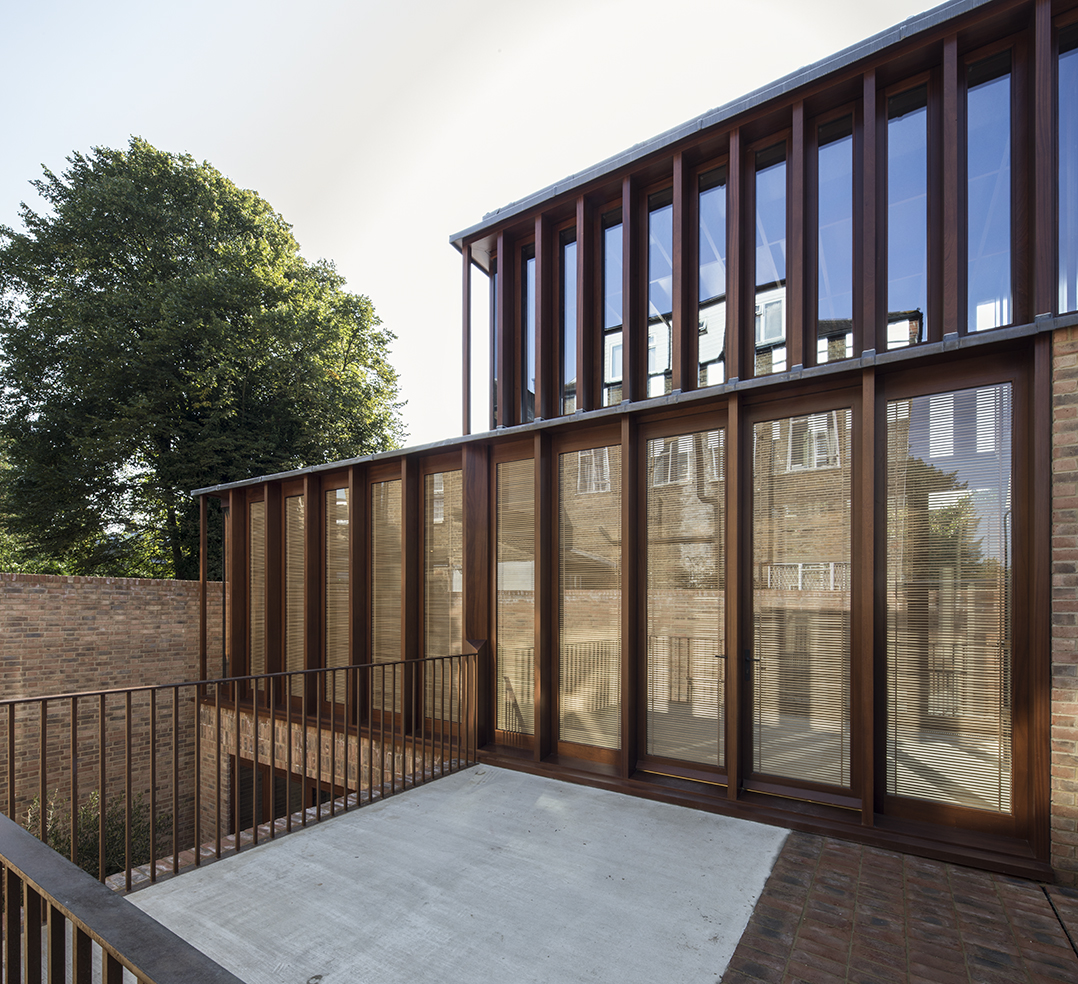
While the house is discreet, without street-level windows at the front, its sides open up towards the courtyards.
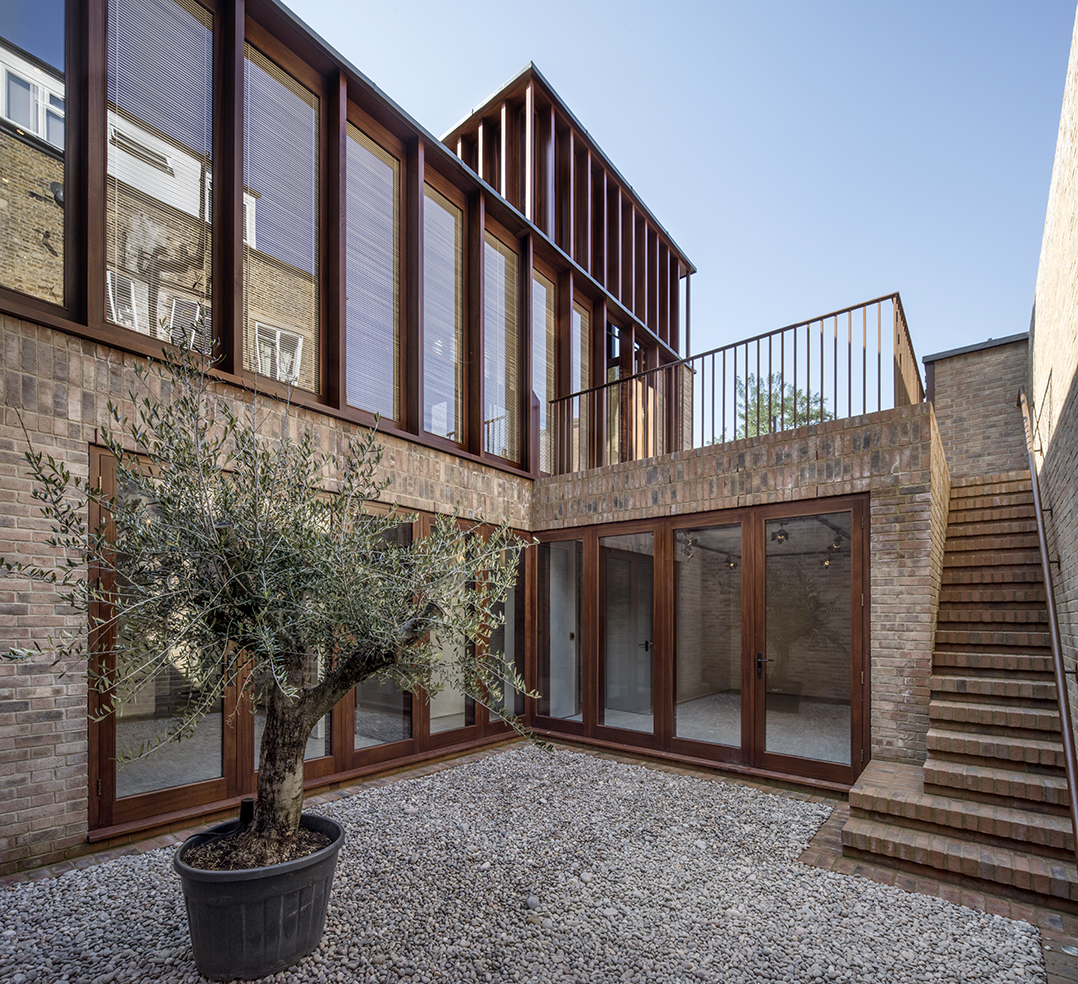
Outside spaces span two levels, one on the ground floor and one below.
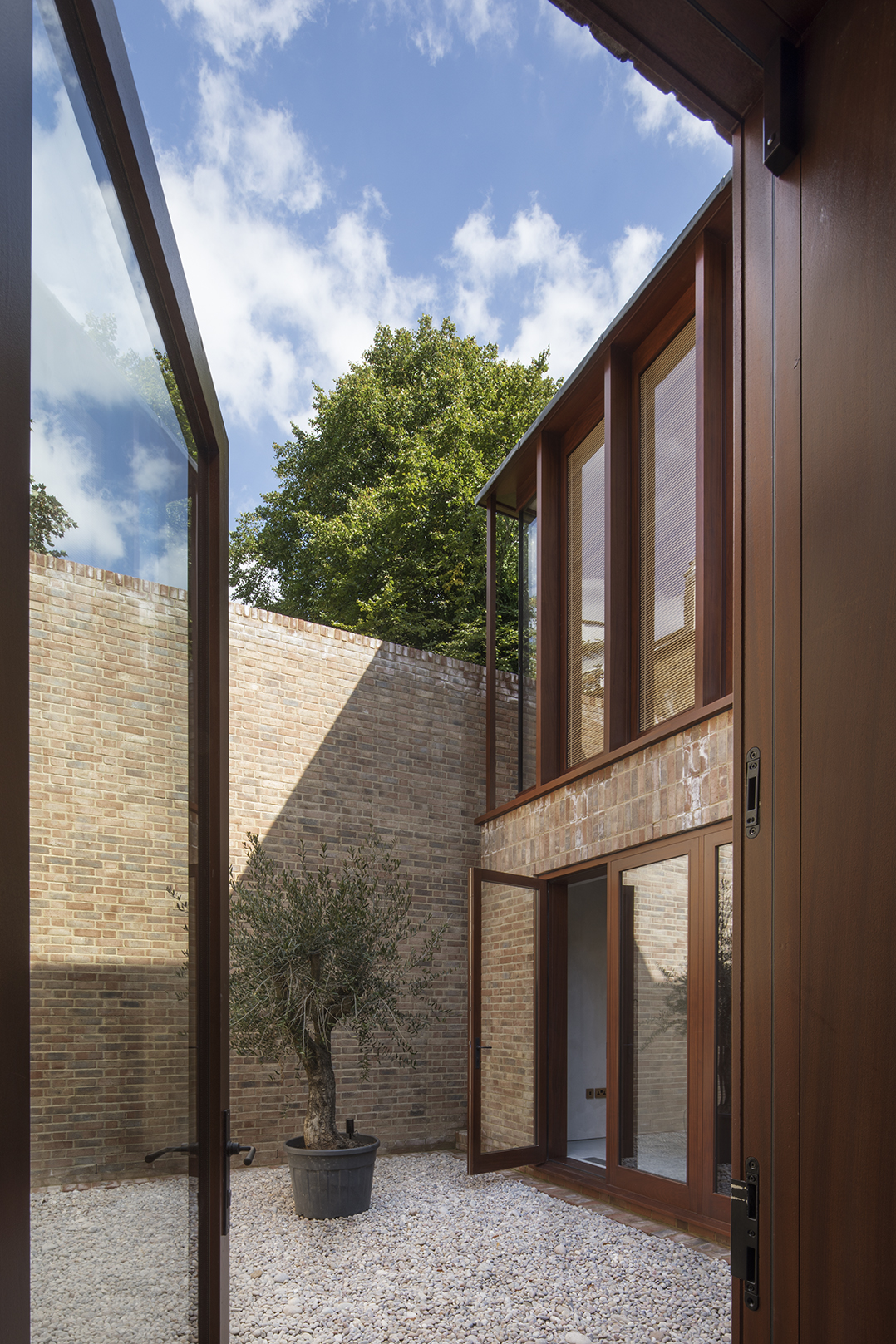
The lower level houses the home’s bedrooms, bathrooms and a study.
INFORMATION
For more information visit the Groves Natcheva Architects website
Receive our daily digest of inspiration, escapism and design stories from around the world direct to your inbox.
Ellie Stathaki is the Architecture & Environment Director at Wallpaper*. She trained as an architect at the Aristotle University of Thessaloniki in Greece and studied architectural history at the Bartlett in London. Now an established journalist, she has been a member of the Wallpaper* team since 2006, visiting buildings across the globe and interviewing leading architects such as Tadao Ando and Rem Koolhaas. Ellie has also taken part in judging panels, moderated events, curated shows and contributed in books, such as The Contemporary House (Thames & Hudson, 2018), Glenn Sestig Architecture Diary (2020) and House London (2022).
-
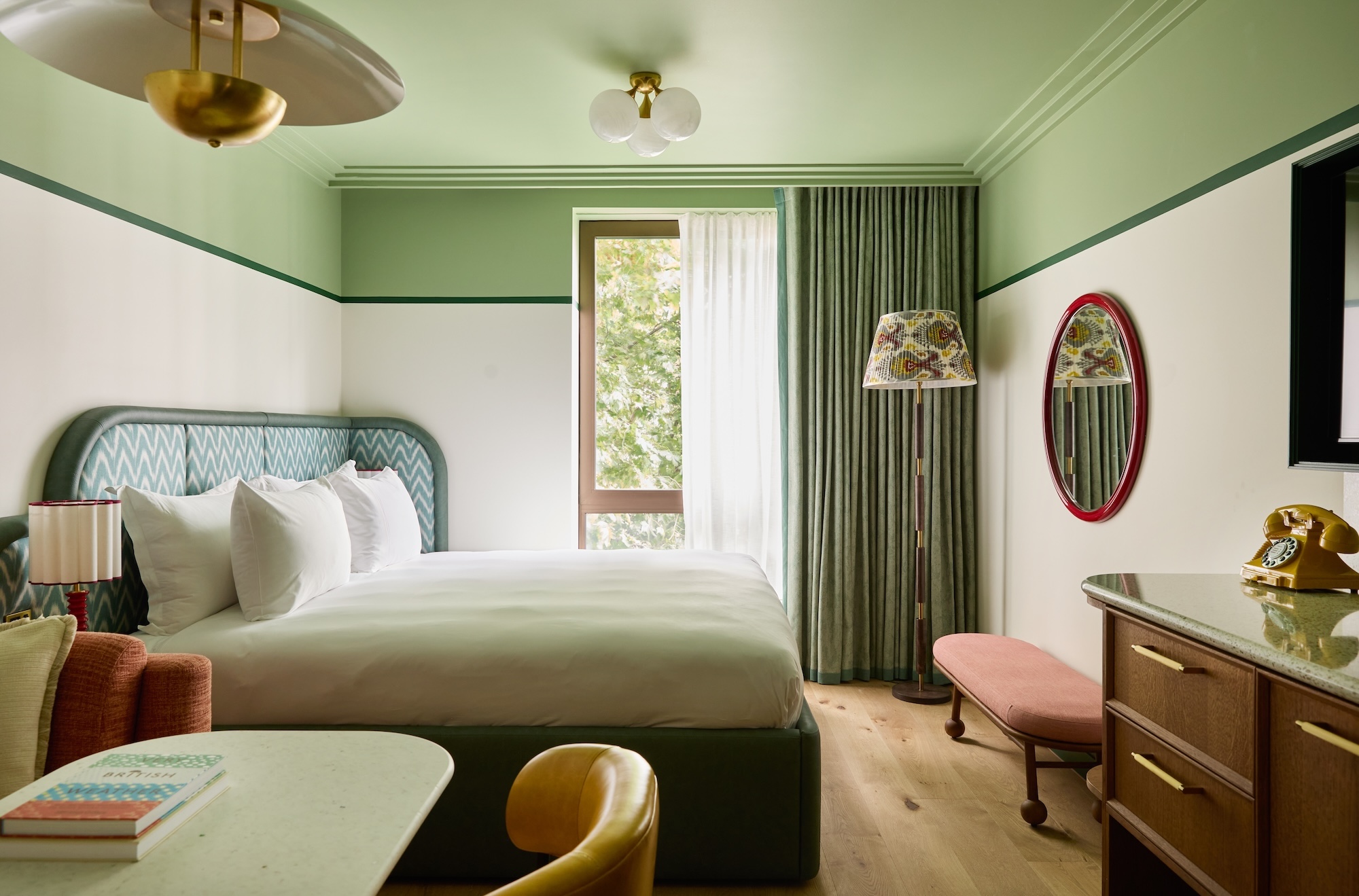 At last: a London hotel that’s great for groups and extended stays
At last: a London hotel that’s great for groups and extended staysThe July London Victoria, a new aparthotel concept just steps away from one of the city's busiest rail stations, is perfect for weekends and long-term visits alike
-
 Three new smartwatches showcase new frontiers in affordable timepiece design
Three new smartwatches showcase new frontiers in affordable timepiece designLong may you run: smartwatches from Withit, Kospet and OnePlus favour function and value above all else, demonstrating just how much the smartwatch has evolved in recent years
-
 Debuts, dandies, Demi Moore: 25 fashion moments that defined 2025 in style
Debuts, dandies, Demi Moore: 25 fashion moments that defined 2025 in style2025 was a watershed year in fashion. As selected by the Wallpaper* style team, here are the 25 moments that defined the zeitgeist
-
 Arbour House is a north London home that lies low but punches high
Arbour House is a north London home that lies low but punches highArbour House by Andrei Saltykov is a low-lying Crouch End home with a striking roof structure that sets it apart
-
 A former agricultural building is transformed into a minimal rural home by Bindloss Dawes
A former agricultural building is transformed into a minimal rural home by Bindloss DawesZero-carbon design meets adaptive re-use in the Tractor Shed, a stripped-back house in a country village by Somerset architects Bindloss Dawes
-
 RIBA House of the Year 2025 is a ‘rare mixture of sensitivity and boldness’
RIBA House of the Year 2025 is a ‘rare mixture of sensitivity and boldness’Topping the list of seven shortlisted homes, Izat Arundell’s Hebridean self-build – named Caochan na Creige – is announced as the RIBA House of the Year 2025
-
 In addition to brutalist buildings, Alison Smithson designed some of the most creative Christmas cards we've seen
In addition to brutalist buildings, Alison Smithson designed some of the most creative Christmas cards we've seenThe architect’s collection of season’s greetings is on show at the Roca London Gallery, just in time for the holidays
-
 In South Wales, a remote coastal farmhouse flaunts its modern revamp, primed for hosting
In South Wales, a remote coastal farmhouse flaunts its modern revamp, primed for hostingA farmhouse perched on the Gower Peninsula, Delfyd Farm reveals its ground-floor refresh by architecture studio Rural Office, which created a cosy home with breathtaking views
-
 A revived public space in Aberdeen is named Scotland’s building of the year
A revived public space in Aberdeen is named Scotland’s building of the yearAberdeen's Union Terrace Gardens by Stallan-Brand Architecture + Design and LDA Design wins the 2025 Andrew Doolan Best Building in Scotland Award
-
 The Architecture Edit: Wallpaper’s houses of the month
The Architecture Edit: Wallpaper’s houses of the monthFrom wineries-turned-music studios to fire-resistant holiday homes, these are the properties that have most impressed the Wallpaper* editors this month
-
 A refreshed 1950s apartment in East London allows for moments of discovery
A refreshed 1950s apartment in East London allows for moments of discoveryWith this 1950s apartment redesign, London-based architects Studio Naama wanted to create a residence which reflects the fun and individual nature of the clients